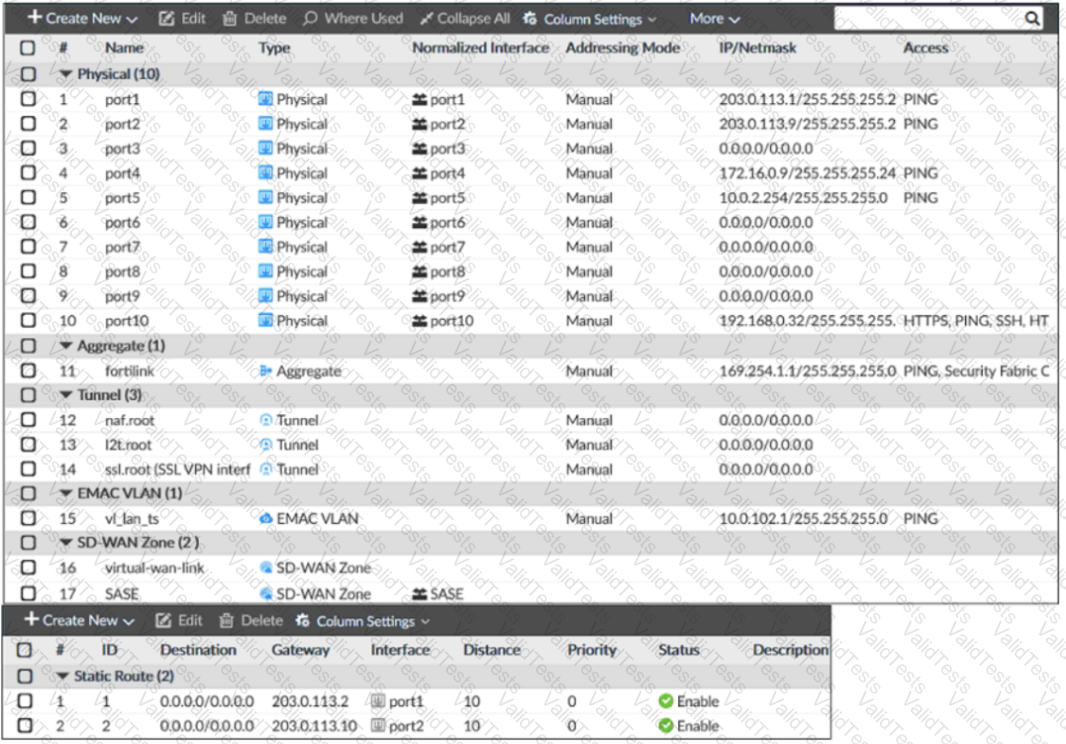
Exhibit B –

Exhibit A shows the system interface with the static routes and exhibit B shows the firewall policies on the managed FortiGate.
Based on the FortiGate configuration shown in the exhibits, what issue might you encounter when creating an SD-WAN zone for port1 and port2?
Refer to the Exhibits:
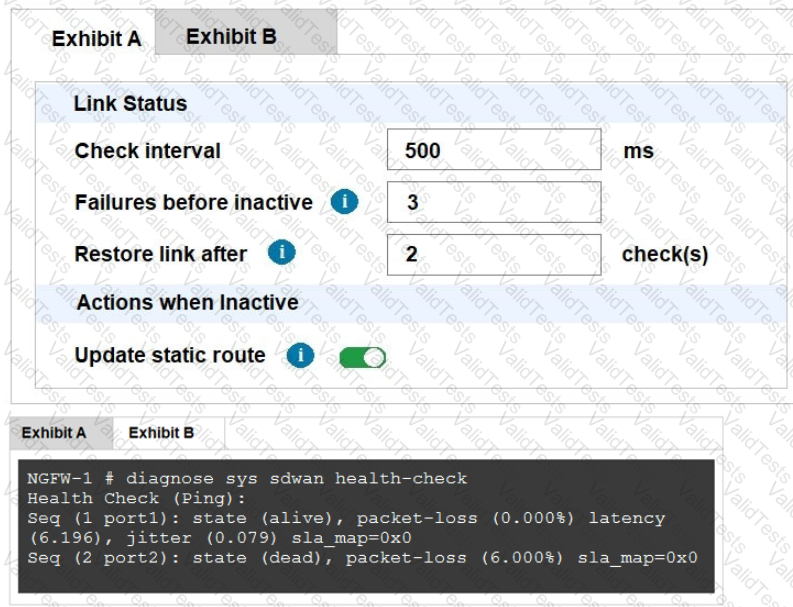
Exhibit A, which shows the SD-WAN performance SLA and exhibit B shows the health of the participating SD-WAN members.
Based on the exhibits, which statement is correct?
What are two benefits of using the Internet service database (ISDB) in an SD-WAN rule? (Choose two.)
Refer to the exhibits.
Exhibit A -
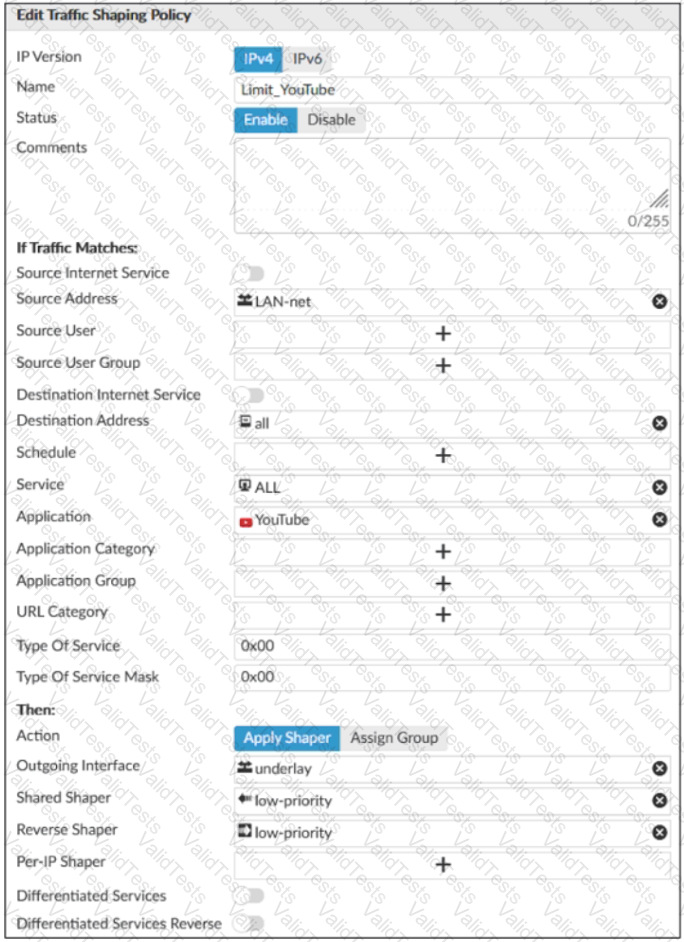
Exhibit B -
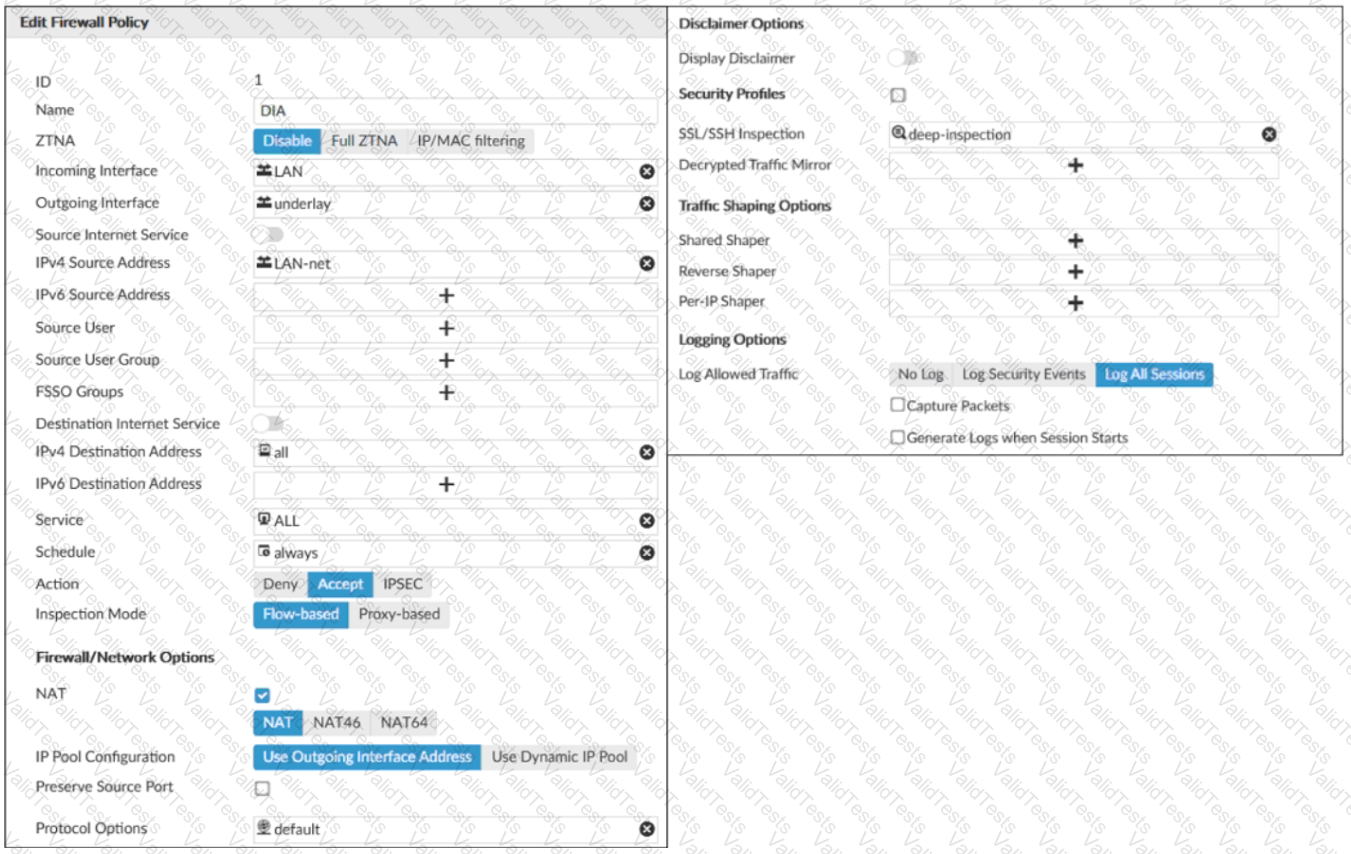
Exhibit A shows the traffic shaping policy and exhibit B shows the firewall policy.
The administrator wants FortiGate to limit the bandwidth used by YouTube. When testing, the administrator determines that FortiGate does not apply traffic shaping on YouTube traffic.
Based on the policies shown in the exhibits, what configuration change must be made so FortiGate performs traffic shaping on YouTube traffic?
Refer to the exhibits.
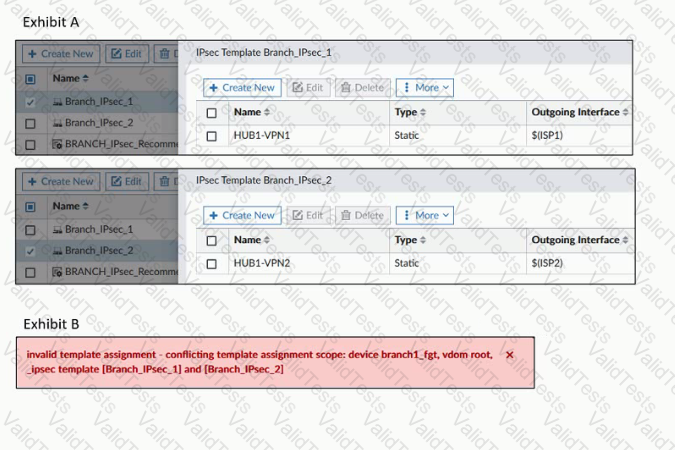
Exhibit A shows two IPsec templates to define Branch_IPsec_1 and Branch_IPsec_2. Each template defines a VPN tunnel.
Exhibit B shows the error message that FortiManager displayed when the administrator tried to assign the second template to the FortiGate device.
Which statement best explain the cause for this issue?
In the default SD-WAN minimum configuration, which two statements are correct when traffic matches the default implicit SD-WAN rule? (Choose two )
Which diagnostic command can you use to show the configured SD-WAN zones and their assigned members?
Which two statements are true about using SD-WAN to steer local-out traffic? (Choose two.)
Refer to the exhibit.
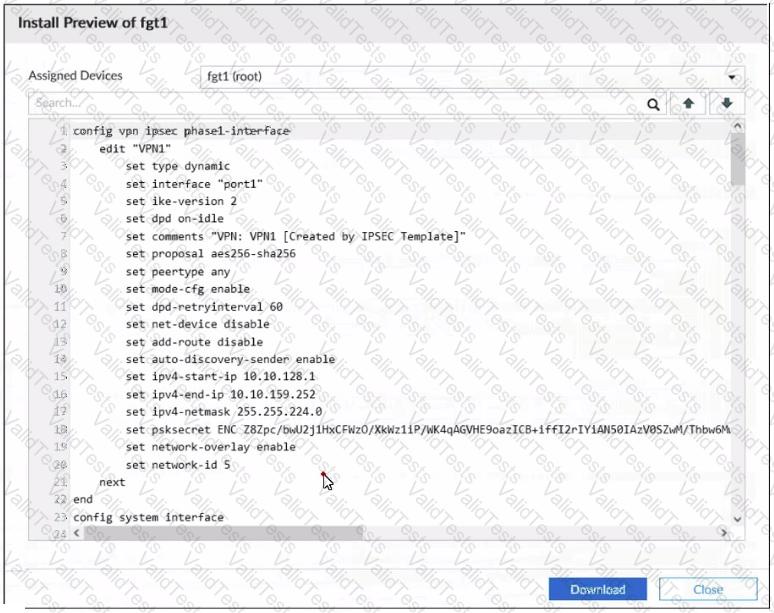
An administrator used the SD-WAN overlay template to prepare an IPsec configuration for a hub-and-spoke SD-WAN topology. The exhibit shows the installation preview for one FortiGate device. In the exhibit, which statement best describes the configuration applied to the FortiGate device?
Refer to the exhibits.
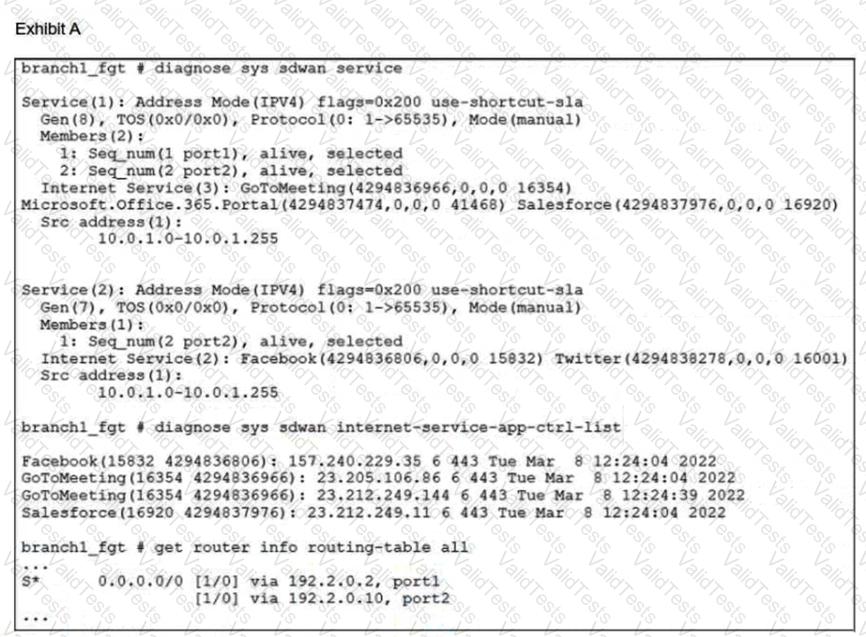
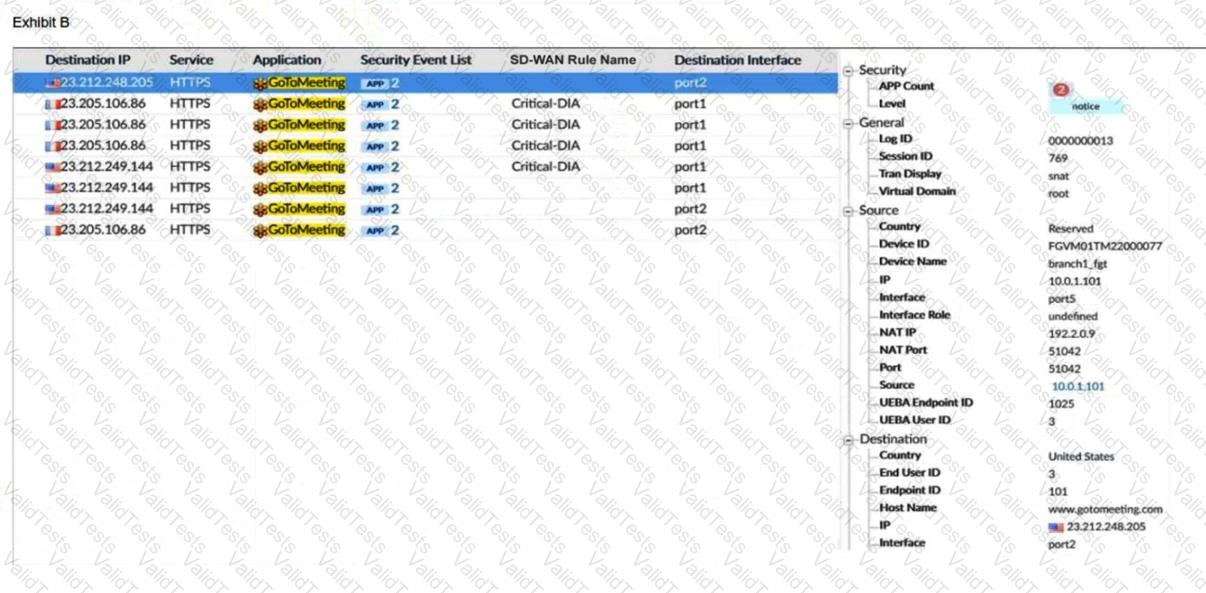
An administrator is testing application steering in SD-WAN. Before generating test traffic, the administrator collected the information shown in exhibit A.
After generating GoToMeeting test traffic, the administrator examined the respective traffic log on FortiAnalyzer, which is shown in exhibit B. The administrator noticed that the traffic matched the implicit SD-WAN rule, but they expected the traffic to match rule ID 1.
Which two reasons explain why the traffic matched the implicit SD-WAN rule? (Choose two.)